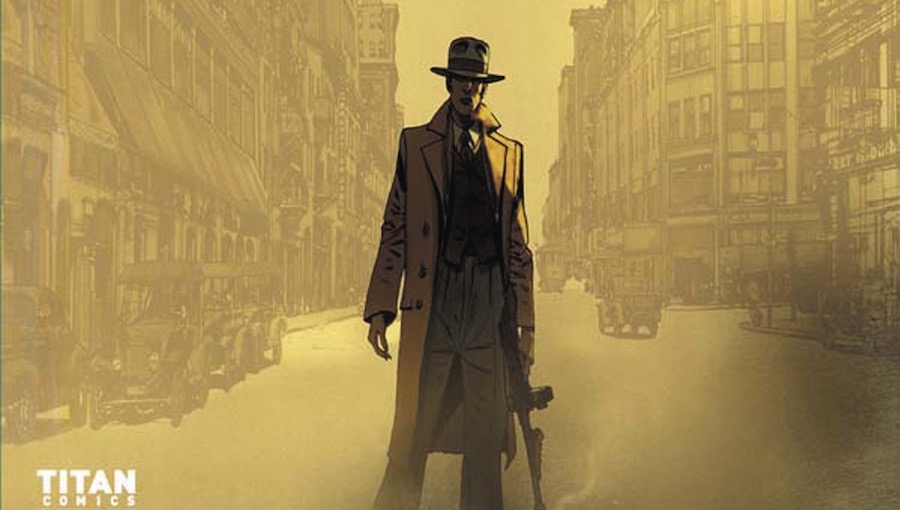Given the popularity of 1920s and 1930s-era America, due mostly to F. Scott Fitzgerald and flappers fashion, it’s no surprise that the interest in pulp novels has remained steady, if not somewhat overlooked at times. That is what made Titan Comics’ announcement of their “Hard Case Crime” imprint so enticing. While most noir-style crime books now simply lift the aesthetic into a more modern era, the Walter Hill-inspired book, Triggerman, looked to be 1930s gangland in its purest form, and it absolutely delivered, although not always to its credit.
The evolution of Triggerman sounds dangerously bizarre. Springing from the mind of Walter Hill (writer and director of The Warriors, Hard Times, and 48 Hrs), it was then adapted by French duo Matz and Jef, only to be turned into an English language book, meaning there was good reason to be skeptical going in. Triggerman #1 gives us a great look at what the two cultures will bring to the book, but it certainly isn’t clear on if what they bring will pay off.
Triggerman sets us in 1930s Arizona, riding in the car with Roy Nash, a sunken-cheeked felon with a “real special talent” for fixing things. The tropes drip off of every panel, and if the cover art didn’t set up the expectation of threadbare rationales and hokey monologues, it would be laughable. Nash’s tough-guy persona is quickly established in gun fight that pits Old West against Gangland Chicago, even earning him the affection of would-be actress and former dancer companion. Turns out Nash is on his way West to LA, where she wants to go and kick off an acting career, so naturally, she invites herself along, despite Nash’s violent tendencies.
There isn’t really much depth in Triggerman‘s inaugural outing in regards to story. It is impossible to tell if the thin sheen of characterization is due to Hill, Matz, or language issues, but outside of Nash being a tough guy with a soft spot for girls, and Rose’s aggressive sexuality and soon-to-unfold sob story, there isn’t anything to sink your teeth into; however, the dialogue is so classic and clichéd that it still makes the book endearing, in the short term anyway.
Since the story was so quickly devoured, it allows for Jef’s art to build us the stage that the dialogue neglects. Nash’s metropolitan dress, vehicle, and swagger make him look alien in the isolated Old West town. The transfer from old world to the new resonates through the panels as menacingly as Nash through the town. There is also the distinct French sensuality around Rose. Her first panel appearance is straight out of a Moulin Rouge poster, and her presence makes Nash seem all the more “American,” something that I hope continues throughout the story.
Stunted dialogue isn’t enough to flatten the book, and the intrigue built is sufficient to make me slightly anxious about the next installment. There is a great deal to like, and the series could shape up to be an enduring pulp mystery, if they manage to build the leads into people we can be excited to learn about.

